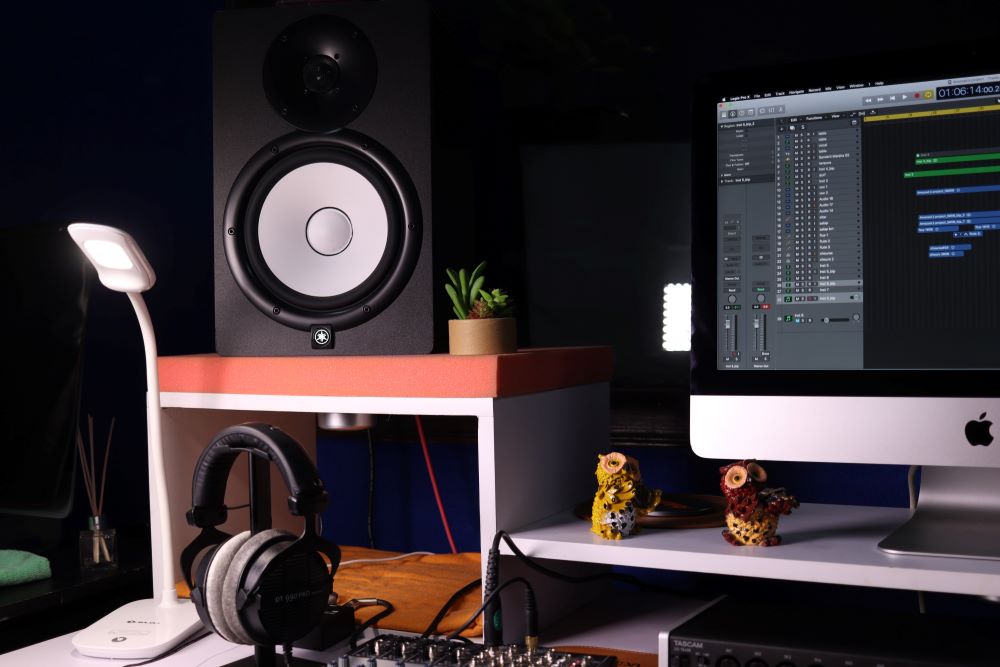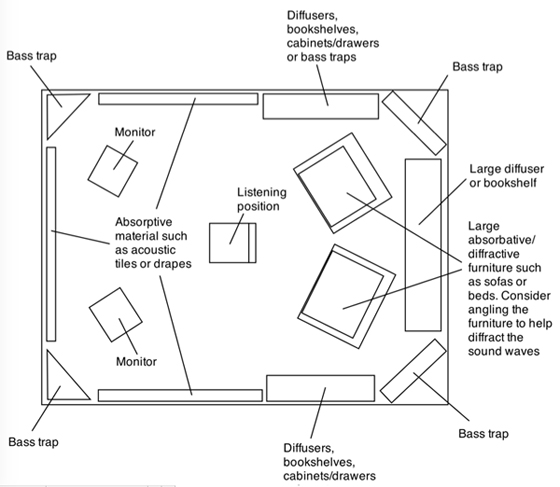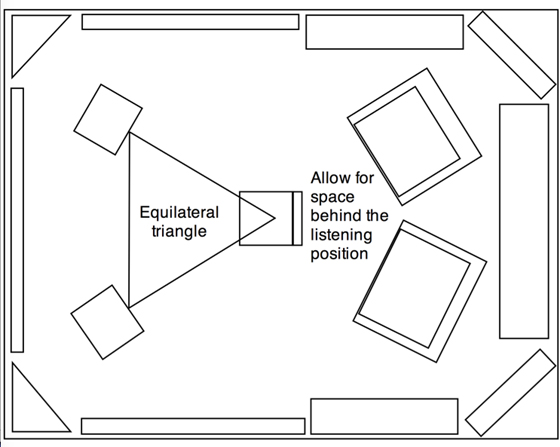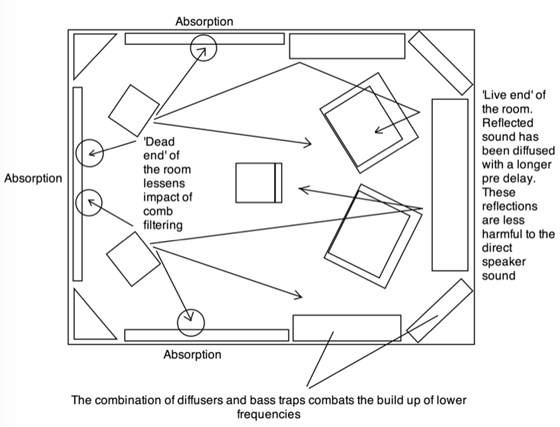
Putting It All Together
Studio design is a large and tricky subject as there are many different ways of looking at how one can be designed.
As mentioned, the aim of this mastering tutorial is not to show you how to build a state of the art audio mastering studio, but how to achieve a professional sound using mostly what you already have.
Assuming you only have access to a rectangular room, as most people reading this mastering tutorial will, here’s a simple way you can achieve a professional listening environment without breaking the bank.
This method is loosely based on a concept by the late Don Davis of Synergetic Audio Concepts where you have a “dead end” to the room and a ‘live end’ to the room.
This first diagram gives a rough idea of how to arrange the furniture/treatment within your room:
Notice the arrangement of the speakers and the space behind the listening position:
Using this arrangement of furniture/treatment will help neutralize the sound of the room, thus allowing you to have more trust in what your monitors are telling you:
Added Tips
— Use a mirror to determine which areas may require acoustic tiles – if you can see your speakers in the mirror while facing forward, you may need to treat those surfaces.
— Don’t cover all your walls in carpet (it’s amazing how many times I have seen this).
— You have little chance of ever stopping the low frequencies from bouncing around anyway, so you should allow for an amount of reflections across the rest of the spectrum in order to balance the tone of ‘all’ the reflections.
— Shock mount monitors to prevent vibrations traveling through the materials of the room, which can reach your ears as sound before the direct speaker sound!
— Also consider mounting absorption/diffusion “above and below” the listening position.
— The larger the room, the better. Low-frequency sound waves need space to develop down to their long wavelengths. A tiny room will reduce your accuracy in monitoring the low end.



